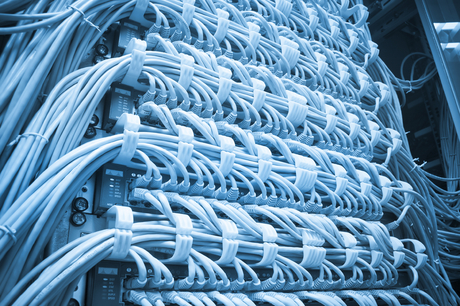Preparing for the networked world

Fixed-line telephones have been with us for more than one hundred years but, just as with most technologies, things have moved on and the days of analog phone lines are numbered. In recent years we have seen a dramatic decrease in the use of landlines (or ‘cord-cutting’ as it is sometimes referred to), largely driven by younger Australians who prefer the mobile phone option.
With the demise of analog, we are seeing the emergence of a rapidly growing array of exciting new technologies and applications.
It is estimated that by 2020 there will be 30 billion smart appliances connected around the world. The Internet of Things is changing the way we live.
With Internet Protocol Version 6 (IPv6), the number of connections to the internet has increased to 78 octillion — that’s 78 billion, billion, billion. Which, according to international futurist Marc Goodman, is enough space to give one trillion IP addresses to each grain of sand on Earth!
The challenge faced from a security perspective is that we have struggled to protect the devices already connected online today, so as more things get connected and are susceptible to hacking, how are we going to protect these? As Goodman warned in an address to an ASIAL forum last year, “While we have been excellent at wiring the world, we have failed to secure it and that’s something we need to give grave consideration to.”
Within the security sector, the use of IP communications and IP cameras connected (wired or wireless) to a home or business network has been one of the fastest growing areas. These devices often include their own web services which enable users to access them remotely using a computer, smartphone or other mobile device.
Networking in security systems is fast becoming the norm. While networks offer many benefits, security remains a critical issue. When installing a system serious consideration needs to be given to provide protection against sophisticated internet threats, which can include malicious acts by organised crime syndicates and foreign adversaries using the internet to attack systems.
The cybersecurity threats we face are real and growing in severity and frequency. “The rapid nature of the move to digitisation has created cybersecurity challenges that need to be addressed, given that we live in a connected world where demand for solutions to protect networks and systems from internal and external hacking and data breaches is growing.
Network security has become an important priority and installers of security systems need to be across the solutions they can provide to clients to protect them.
Network security activities protect the usability, reliability, integrity and safety of the network and data. Effective network security targets a variety of threats and stops them from entering or spreading on a network.
Many network security threats today are spread over the internet. The most common include:
- viruses, worms and Trojan horses;
- spyware and adware;
- zero-day attacks, also called zero-hour attacks;
- hacker attacks;
- denial-of-service attacks;
- data interception and theft;
- identity theft.
Due to the complexity and nature of threats faced, there is no single solution available. A more measured approach is needed, one that involves multiple layers and which offers protection should one layer fail.
Network security is achieved through both hardware and software. Among the key security components are:
- antivirus and anti-spyware, firewalls to block unauthorised access to your network;
- intrusion prevention systems (IPS) to identify fast-spreading threats, such as zero-day or zero-hour attacks;
- virtual private networks (VPNs) to provide secure remote access.
It is also essential to ensure that software is constantly updated and managed to ensure networks are protected from emerging threats.
With the move to the networked world, one of the fundamental challenges facing security installation companies is ensuring that they have a suitably skilled workforce capable of meeting the needs of customers. Investment in staff training not only boosts skills but can also improve loyalty.
‘There just aren’t enough skilled technicians out there’ is a complaint often mooted in this industry. Yet very few companies do anything about addressing the issue, rather they wait for the problem to fix itself, which is not going to happen. Thankfully there are some forwarding thinking and resourceful operators who have taken the initiative by engaging technicians who understand the Internet of Things, IP, the National Broadband Network and the vast multitude of new product innovations. These operators have upskilled their technicians on IP Networks, Advanced CCTV, Access Control, Optical Fibre and Structured Cabling through the ASIAL Security technician Certification program.
In short, we live in a networked world where understanding how networked security systems work and can be protected will be critical to the future success of your business. So rather than fighting change, look to embrace it — you may be pleasantly surprised by the exciting opportunities that arise from doing so.
How smart HVAC is creating sustainable buildings
By integrating advanced technology and data-driven strategies, building operators can greatly...
Smelly research could influence HVAC industry
In a dedicated lab space that mimics a tiny house, scientists are investigating the impact of...
Lifestyle community gains a new level of connectivity
GemLife, a developer of over-50s lifestyle communities, was facing challenges with its fixed...




